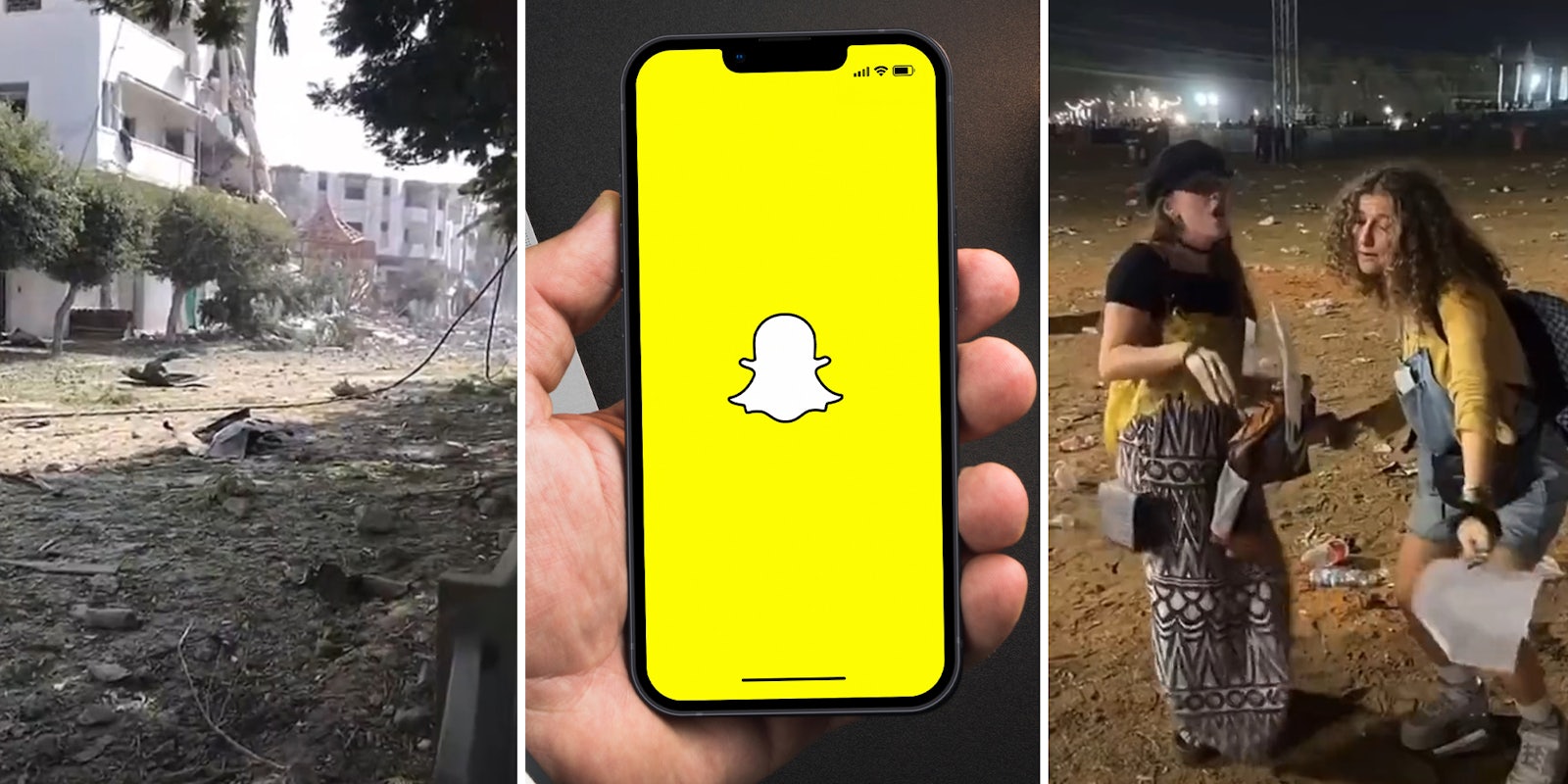A thread on X highlighting the difference in images posted to Snap Map by users posted in Israel versus Gaza is going viral.
Images posted in the thread from Israel showed people drinking, eating, driving, and generally going about their day normally, while the images posted in Palestine showed people losing internet access, staying in makeshift housing outdoors, and wandering through rubble and overflowing trash.
The thread has been viewed more than 500,000 times since being posted on Saturday.
In the thread, a number of pictures show the stark contrast between the two.
The user is not the first to try to use Snap Maps—a feature of Snapchat that enables users to share and view content across the globe—to ascertain real-time updates from Gaza.
“If you have snapchat, make sure to check snap maps,” posted another user on Monday. “you can actively see the difference in conditions between palestine and israel. israelis are out partying and seeing friends for fun while palestians are constantly running and hiding from israeli bombs and showing the damage.”
“If y’all want real time footage of what’s happening in Palestine, Snapchat maps is the fastest place to go bc so many people are uploading snaps from their phones, just go to the Gaza Strip & click on the areas that are lit up,” wrote someone else, who additionally shared a video taken from Snapchat of a man in Gaza standing in rubble.
Israeli Defense Forces have been pushing into Gaza, though they have not yet deemed the operation an invasion.
The incursion comes after Israel cut off water and electricity to the Gaza Strip, which United Nations chief Antonio Guterres deemed “the collective punishment of the Palestinian people.”
Israel has since permitted humanitarian aid to enter Gaza through the southern Rafah crossing and says it has since restored water. However, very little fuel has been allowed into Gaza. Guterres warned that “without fuel, aid cannot be delivered, hospitals will not have power, and drinking water cannot be purified or even pumped.”
Israel’s actions are a response to the Oct. 7 attack launched by Hamas, in which at least 1,400 people in Israel were killed and more than 200 were taken hostage—the vast majority of whom are still being held in Gaza.
Israel’s ambassador to the United Nations, Gilad Erdan, told the Security Council in October that Israel was on a “rescue mission” and if “Hamas put down their arms tomorrow, return our hostages, and turn themselves in, this war can end without one more shot being fired.”



